Pinus Koraiensis (Korean Pine)
Pinus koraiensis is a tree species and is commonly termed as Korean Pine. This plant produces pine nuts which is good for health. Many trees produce pine nuts but this one is the crucial one. This pine nut is native to eastern Asia, Manchuria, Japan and in some parts of eastern Russia. It is a mountain tree, growing at moderate altitudes. Pinus koraiensis is a member of the white pine group. This nut pine is a staple food in northern Asia.
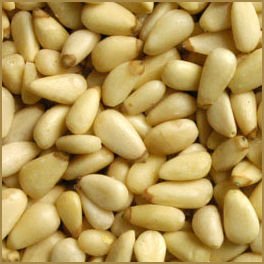
Pinus Koraiensis (Korean Pine)
Table Of Content
Korean Pine Common Name
Pinus Koraiensis is commonly known as Korean Pine.
Pinus Koraiensis Description
Pinus koraiensis is cultivated for both excellent timber and abundant edible seeds. The genus pinus consist of about 110 species, of these about 29 produce seed that are used as a source of food for human beings.
Color: The seeds are grayish brown in color.
Size: Pine seeds are 7cm-13 cm long.
Shape: They are mostly found in oval and pyramidal shapes.
Shell: The nut shell and the seed shell are fused with each other.
Taste: Pine nuts are extremely crunchy having a salty taste.
Pinus Koraiensis Distribution
Pinus korainses plant is largely found in North Eastern china were the annual temperature, precipitation and humidity is average. Apart from China, the plant also grows in some parts of eastern Canada and USA.
Pinus Koraiensis Tree
Pinus Koraiensis is a common ornamental tree and is widely seen in parks and gardens. These trees prefer regions where the climate is cold. The tree is tolerant of severe winter cold. Pinus tree becomes irregular with age and the growth rate is quite slow.
Pinus Koraiensis Cultivation
Soil: Pinus Koraiensis prefer growing in moist, well drained loams in full sun. The plant grows well in both sandy and clay soils. Avoid poorly-drained wet soil.
Climate: These trees grow well in cool summer climates. They do not grow well in places having high humidity and temperature.
Sunlight: Pinus seeds germinate best in the presence of light and that is why the tree should be grown in open spaces.
Water: Watering the plant frequently is not that important.
 Picture 2 – Korean Pine Picture
Picture 2 – Korean Pine Picture
Pinus Koraiensis Nutritional Value
| Nutritional value per 100 g (3.5 oz) | |
| Carbohydrates | 13.1 g |
| sugar | 3.6gm |
| starch | 1.4gm |
| protein | 13.7gm |
| Fat | 68.4 g |
| – saturated | 4.9 g |
| – monounsaturated | 18.7 g |
| – polyunsaturated | 34.1 g |
| Dietary fiber | 3.7 g |
| Water | 2.3 g |
| Vitamin A equiv. | 1 μg (0%) |
| beta-carotene | 17 μg (0%) |
| Thiamine (vit. B1) | 0.4 mg (35%) |
| Riboflavin (vit. B2) | 0.2 mg (17%) |
| Vitamin B6 | 1.20mg |
| Pantothenic acid (B5) | 0.3 mg (6%) |
| Niacin | 4.4mg |
| Chorine | 34 μg (9%) |
| folate | 55.8 mg (11%) |
| Vitamin C | 0.8 mg (1%) |
| Vitamin E | 9.3 mg (62%) |
| Vitamin K | 53.9 μg (51%) |
| Calcium | 16 mg (2%) |
| Magnesium | 251 mg (71%) |
| Iron | 5.5 mg |
| Manganese | 8.8 mg (419%) |
| Phosphorus | 575 mg (82%) |
| Zinc | 6.4mg |
| Potassium | 570mg |
Pinus Koraiensis Health Benefits
Korean pine nuts offer extremely beneficial effects on health to achieve a healthy and long life span.
- Consumption of Korean pine can reduce your cholesterol level to a great extent. This is a proven fact. Those suffering from higher cholesterol can have these nuts daily.
- Korean pine is quite helpful for treating pathological side effects caused due to excess of insulin that leads to several side effects. Korean pine nuts are rich in calories, vitamins, minerals and anti-oxidants. The nut is packed with numerous health promoting phyto-chemicals. Thus helping in curing the effects.
- Recent research has shown its effective use in weight loss. Korean pine also consists of fatty acid termed as pinolenic acid. This acid is good for those suffering from excess weight problem. Pinolenic acid causes the prompting of hunger suppressant enzymes.
- Pines are also an excellent source of vitamin E. Vitamin E is a soluble antioxidant and is efficient for our body. Keratin pine is a popular ingredient in the preparation of gluten free food formulas.
- Korean pine also contains minerals like magnesium, potassium, calcium and iron. Of all the minerals, magnesium is the core important one.
Korean Pine Nut Oil
Korean pine nut oil is well-known for its health benefits. The nut oil reduces appetite and helps the dieter to eat less. The oil is 100% natural and the market price is quite low compared to that of the diet pills.
Pinus Koraiensis Availability
Pinus nuts are accessible throughout the year. One can have it either from the grocery stores or from the online stores. These nuts are quite expensive, but are available throughout the year.
Pinus Koraiensis Storage
These nuts should be kept in cool and dry place. Storing the nut shell in some cool place is also important.
Pinus Koraiensis Uses
Pinus nuts are used for several purposes because of its nutritional components.
Edible uses
Seed, nut and oil of this plant have edible uses. Seeds can be eaten both raw and cooked. The oil has several health benefits.
Medicinal Uses
The seed contain several medicinal properties and is totally antibacterial and anti-inflammatory. The seeds are used for treating earache, epitasis, and also to promote milk flow in nursing mothers.
Apart from that, pinus koreansis is useful in treating cough, cold, influenza, etc. Those suffering from skin problems are advised by the doctors to have these nuts daily before their morning breakfast. It is also beneficial for the respiratory system.
Other uses
These nuts are frequently added to the sweetmeat called pignoli. Pignoli cookies, an Italian confection is made of almond flour formed into dough and then topped with pine nuts. Pine nuts are used in Middle Eastern cuisine as well.
Pinus Koraiensis Side Effects
Sometimes over consumption of these nuts can lead to several side effects. It can cause taste disturbances. This is the only side effect that one can suffer from. This happens because of some chemical usage in the shelling process.
Pinus Koraiensis Interesting facts
- Korean pine has 2-5” needles.
- Pinus is monoecious.
- The leaves of the plant persist for 2-4 years.
This is something really great to add into your diet. Daily consumption of Korean pine will result in good health for sure
Pinus Koraiensis Pictures
Here are some Pinus Koraiensis pictures.
References:
- by Debasmita Dasgupta
- March 31st 2012

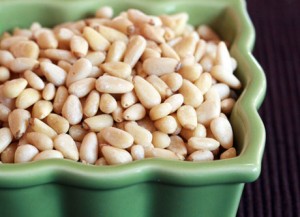
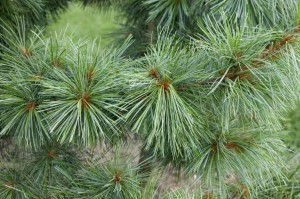
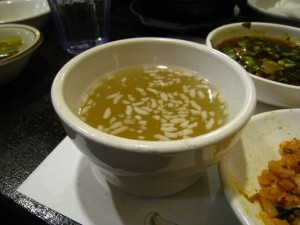
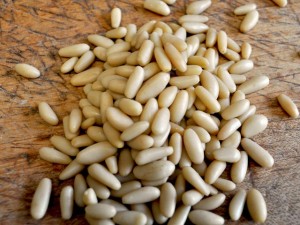
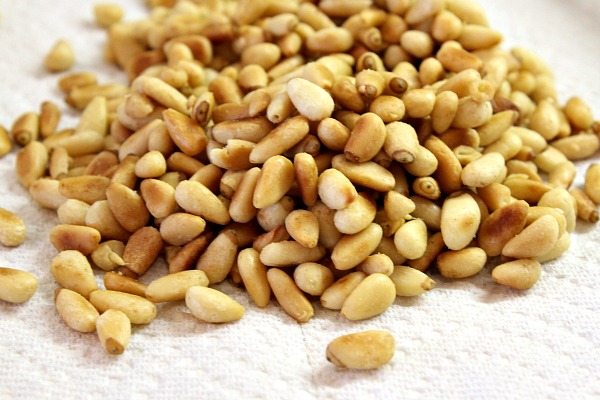

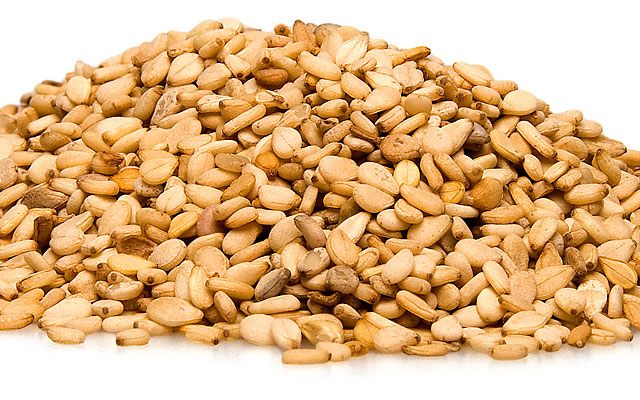
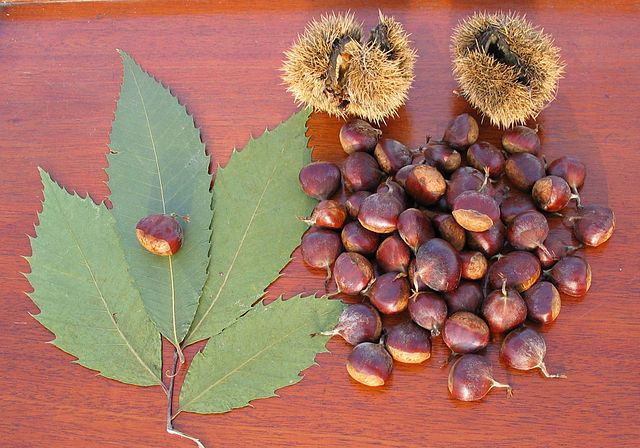
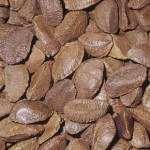
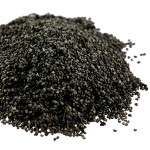
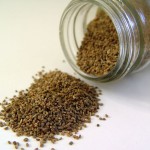
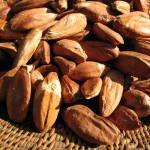
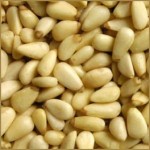
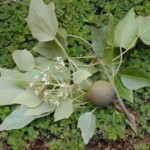
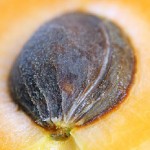
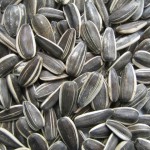
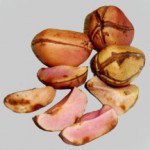
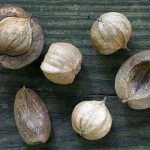





Leave a Reply